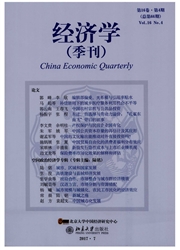

 中文摘要:
中文摘要:
改革开放30年来,在农村居民收入水平快速增长的大背景下,农村减贫进程却表现出明显的波动性和不一致性。基于此,本文在贫困分解的基础上,运用贫困弹性的动态特征,从理论和实证的角度探讨了收入增长和收入分配对贫困减少的影响,解释上述问题。文章发现:(1)人均收入水平越高,贫困越有可能和收入不平等联系在一起;(2)收入不平等越严重的地区,贫困对收入不平等的反应越迟钝;(3)1998年是我国农村反贫困性质发生改变的拐点。文章建议,今后农村反贫困政策的重点应从以促进收入增长的开发式扶贫向以改善收入分配为重点的社会保护式扶贫政策转变。
 英文摘要:
英文摘要:
In the last thirty years, rural poverty reduction has shown significant fluctuation and inconsistency in the context of rapid growth oi income. Based on the decomposition of poverty, this paper analyzes the dynamic characteristics of poverty elasticity. The key issue is the impact of income growth and income distribution on the rate of poverty reduction. We find that (1) when per capita income is higher, the rate of poverty is more associated with in-come inequality, (2) in areas where income inequality appears more serious, the rate of poverty is less sensitive to inequality, and (3) the year of 1998 is a turning point of poverty re- duction. We suggest that in the future, the focus of rural anti-poverty policy should shift from promoting income growth to improving income distribution.
 同期刊论文项目
同期刊论文项目
 同项目期刊论文
同项目期刊论文
 期刊信息
期刊信息
